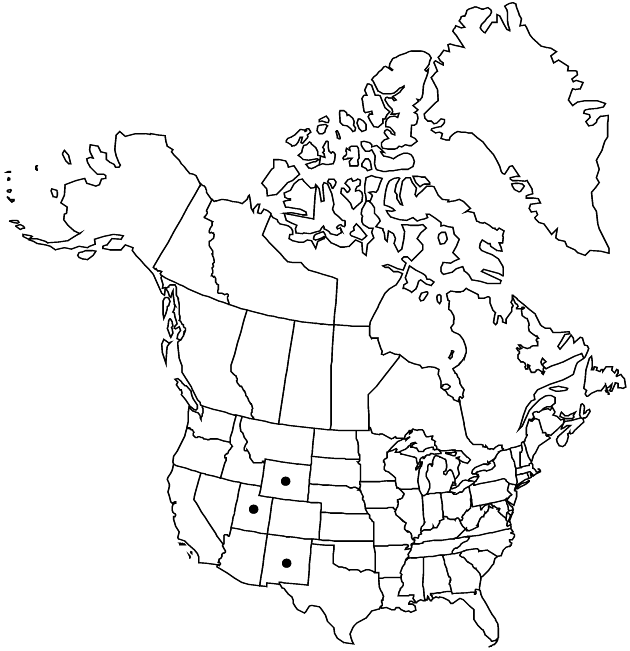Erigeron concinnus var. condensatus
in S. Watson, Botany (Fortieth Parallel), 151. 1871.
Endemic
Synonyms: Erigeron condensatus (D. C. Eaton) Greene Erigeron pumilus var. condensatus (D. C. Eaton) Cronquist
Plants mostly 4–10 cm. Stems ± scapiform, densely piloso-hispid. Leaves mostly basal, cauline relatively few, greatly reduced. Heads 1.
Phenology: Flowering May–Jul.
Habitat: Open, gravelly or sandy slopes, sagebrush, juniper, pinyon-juniper
Elevation: 1500–2400 m
Distribution

N.Mex., Utah, Wyo.
Discussion
Variety condensatus is distinctive in habit (single heads on nearly scapiform stems), but intergrades with var. concinnus are common in some areas. And although populations of var. condensatus appear to be concentrated in the southern and eastern part of the range of the species, even there those enclaves are scattered within the larger range of var. concinnus, and the evolutionary nature of the variation pattern is not clear.
Selected References
None.
Lower Taxa
None.
... more about "Erigeron concinnus var. condensatus"
introrse +
connate +
distinct +
herbaceous +
scarious +
hirsute +
papillate +
continuous +
decurrent +
1-nerved +
narrowly oblanceolate;linear-oblong +
ribbed +
rhizomelike +
stigmatic +
barbellate +
persistent +
10;14 +
absent +
reduced +
absent +
2-nerved +
dimorphic +
1.2mm;1.8mm +
absent +
staminate +
straight +
eglandular +
distinct +
proximal +
1;5 +
bisexual +
dispersed +
indeterminate +
surrounding +
turbinate;hemispheric +
reflexing +
alternate +
basal +
erect;spreading +
deltate +
2-carpellate +
inferior +
attached +
anatropous +
tough +
thick +
pistillate +
absent +
connate +
persistent +
distinct +
falling +
unequal +
equal +
in S. Watson, Botany (Fortieth Parallel), +
1871 +
pistillate +
absent +
fertile +
epaleate +
pitted +
flat;conic +
fibrous +
exalbuminous +
modifed +
2;4 +
stramineous +
persistent +
connate +
falling +
Endemic +
alternate +
piloso-hispid +
scapiform +
deltate +
2-branched +
glabrous +
Erigeron concinnus var. condensatus +
Erigeron concinnus +
variety +
indurate +
shorter +
taprooted +
perennial +